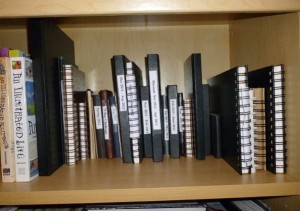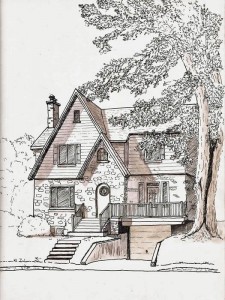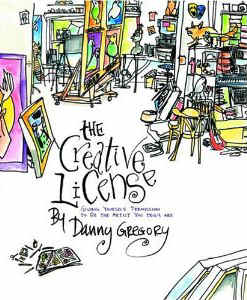Have you noticed that as you get older the time between your birthdays gets shorter? Have you also noticed that you’re not as thrilled by them as you once were? Maybe it’s just me. I still act like a kid but I’m old and getting older doesn’t impress me much.
 But I just had a birthday that I liked a lot. I’m now a two-year-old sketcher. That’s right, near the end of August 2011, I discovered Danny Gregory’s books and his notion that doing art wasn’t about talent and that it wasn’t about creating great art.
But I just had a birthday that I liked a lot. I’m now a two-year-old sketcher. That’s right, near the end of August 2011, I discovered Danny Gregory’s books and his notion that doing art wasn’t about talent and that it wasn’t about creating great art.
He had the audacity to suggest that anyone could enjoy doing art because the process of doing art, not the end product, is what’s important. As one who has always tried to be creative, but also one who was told he had no ‘talent’ for art, this came as a revelation to me. It was a life-changing event.
And so I started drawing cubes. I’m an analytical type, an ex-scientist, so I felt that if I was going to draw, I needed to start with boxes. In hindsight, I’m glad I did. I drew a gazillion of them. I’d draw one and then try to draw another rotated a bit in one direction of the other from the original. It seemed I was buying a new watercolor book every other day, determined that I’d learn to paint.
But I learned something very quickly. Most watercolor books go like this:
1) Start with a sketch… 2) add a wash….. 3) do something else… 4) finish up with details.And, to me, this is akin to saying “Want to decorate your own house? Ok, first do all the carpentry and plumbing” but it is the standard way that watercolor books are presented. If you can’t draw, they’re all pretty useless in my opinion.
So I decided that I would spend the first year “learning to draw”, whatever that meant to me at the time. I’m still trying to learn to draw and now figure I’m not going to master it anytime soon. But I do believe that by emphasizing drawing over painting I did myself a great service. For the past couple years I’ve used watercolors but mostly like crayons, filling in areas in my pen and ink sketches as a 5-year old does in their coloring books.
I wish I could share with you some of my early attempts at drawing, but I cannot. All my early sketching was done on photocopy paper and ended up in the trash can. I saw no need to keep any of it, at least until I mentioned this to more seasoned sketchers in an Internet forum. There seemed to be a collective gasp, followed by “Don’t do that. You’ll want to look back some day and evaluate your progress.” They were right and that day was today. I guess that advice came in October 2011 as from then on, everything is in sketchbooks, the good, the bad, and the ugly.

Here was my first attempt at a ‘real’ sketch. I did it from a photo as in October of 2011 I ‘knew’ I’d be eaten alive by passers-by if I dared sketch on location. At the time I was pretty happy with it. I guess I still am given that only a month prior I was struggling to draw cubes (grin).
 But, since then I’ve filled a sketchbook or three. I’ve become quite passionate about urban sketching. I carry sketchbooks with me wherever I go and I sketch constantly, or so it seems. I can’t seem to get enough. While I’ve got a lot to learn about art in general, and watercolors in particular, I’m sure having a lot of fun and that’s what art is supposed to be all about. Just ask Danny Gregory.
But, since then I’ve filled a sketchbook or three. I’ve become quite passionate about urban sketching. I carry sketchbooks with me wherever I go and I sketch constantly, or so it seems. I can’t seem to get enough. While I’ve got a lot to learn about art in general, and watercolors in particular, I’m sure having a lot of fun and that’s what art is supposed to be all about. Just ask Danny Gregory.



